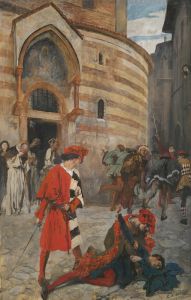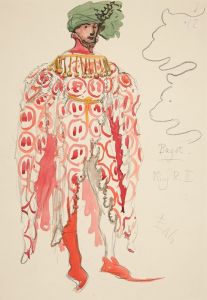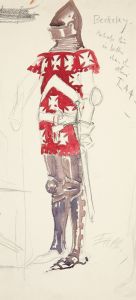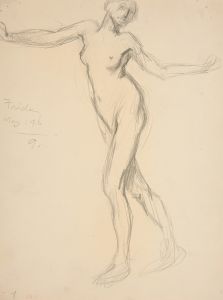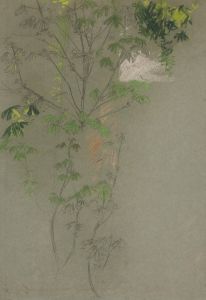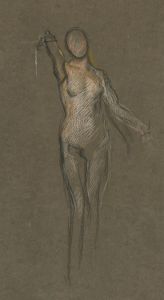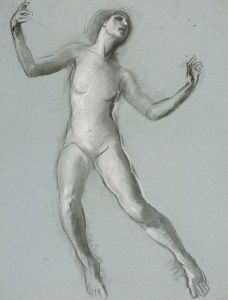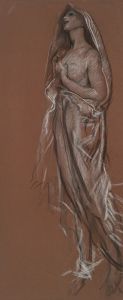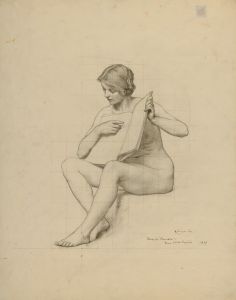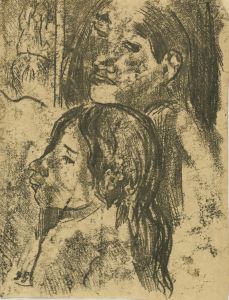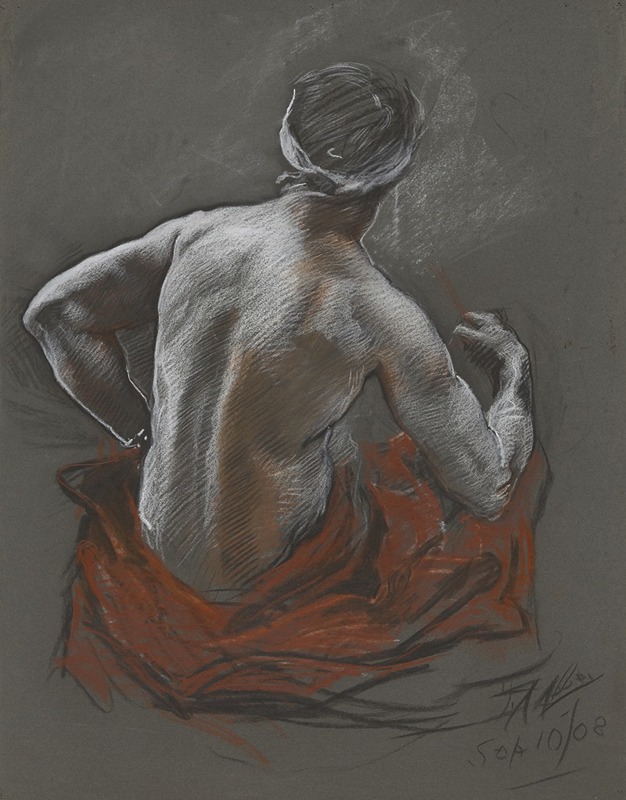
Study of a Seated Indian, Figure study for Penn’s Treaty with the Indians, mural in the House chamber at the state capitol of Pennsylvania, Harrisburg
A hand-painted replica of Edwin Austin Abbey’s masterpiece Study of a Seated Indian, Figure study for Penn’s Treaty with the Indians, mural in the House chamber at the state capitol of Pennsylvania, Harrisburg, meticulously crafted by professional artists to capture the true essence of the original. Each piece is created with museum-quality canvas and rare mineral pigments, carefully painted by experienced artists with delicate brushstrokes and rich, layered colors to perfectly recreate the texture of the original artwork. Unlike machine-printed reproductions, this hand-painted version brings the painting to life, infused with the artist’s emotions and skill in every stroke. Whether for personal collection or home decoration, it instantly elevates the artistic atmosphere of any space.
"Study of a Seated Indian, Figure study for Penn’s Treaty with the Indians" is a preparatory work by the American artist Edwin Austin Abbey. This study was created as part of Abbey's extensive work on the mural "Penn’s Treaty with the Indians," which is located in the House chamber at the Pennsylvania State Capitol in Harrisburg. Abbey, renowned for his murals and illustrations, was commissioned to create a series of murals for the Pennsylvania State Capitol, which was completed in the early 20th century.
Edwin Austin Abbey was born in 1852 in Philadelphia, Pennsylvania. He gained prominence as an illustrator and painter, particularly known for his historical and literary subjects. Abbey's work on the Pennsylvania State Capitol murals was one of his most significant public commissions. The murals were intended to depict important events and themes from Pennsylvania's history, with "Penn’s Treaty with the Indians" being a central piece.
The mural "Penn’s Treaty with the Indians" illustrates the legendary meeting between William Penn, the founder of Pennsylvania, and the Lenape Native Americans. This event is traditionally believed to have taken place in 1682, under an elm tree at Shackamaxon, now part of Philadelphia. The treaty is celebrated as a symbol of peace and fair dealings between European settlers and Native Americans, although the historical accuracy of the event is debated among historians.
Abbey's study, "Study of a Seated Indian," was part of his preparatory work for the mural. Artists often create studies to explore composition, form, and details before executing the final work. This particular study would have helped Abbey in accurately depicting the Native American figures in the mural, ensuring they were represented with dignity and respect. Abbey was known for his meticulous attention to detail and historical accuracy, often conducting extensive research to inform his work.
The Pennsylvania State Capitol murals, including "Penn’s Treaty with the Indians," are considered masterpieces of American mural painting. Abbey's work is noted for its vibrant colors, dynamic compositions, and the ability to convey historical narratives compellingly. The murals not only serve as decorative art but also as educational pieces, reflecting the history and values of Pennsylvania.
Abbey's contribution to the Pennsylvania State Capitol was part of a broader movement in the late 19th and early 20th centuries to incorporate fine art into public buildings. This movement aimed to inspire civic pride and educate the public through accessible art. Abbey's murals continue to be appreciated for their artistic merit and historical significance.
In summary, "Study of a Seated Indian" is an important preparatory work by Edwin Austin Abbey for his mural "Penn’s Treaty with the Indians" in the Pennsylvania State Capitol. Abbey's work on the Capitol murals is celebrated for its artistic excellence and its role in depicting Pennsylvania's history.





